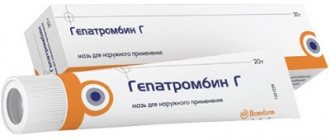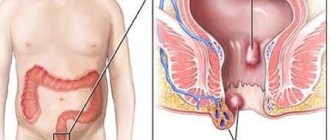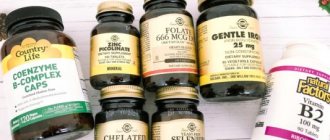Exhausting allergies, chronic sinusitis, polyps in the nasal cavity... It’s not a pleasant set. But even with it one can and must fight. Most often, the attending physician prescribes Nasonex spray. The drug has anti-inflammatory and antiallergic effects. It is based on mometasone furoate, which belongs to the group of glucocorticoids and is considered a synthetic drug.
an analogue of adrenal hormones, corticosteroids (GCS) for topical use.
Nasonex copes well with allergic rhinitis
Mometasone suppresses inflammatory and allergic reactions of various types when used in doses at which systemic effects do not develop. The therapeutic effect is observed 12 hours after the start of use.
Despite the fact that Nasonex is a hormonal drug, it does not affect other organs and systems except the nose.
A small dosage and use only in the nasal area ensures a very low concentration of mometasone in the blood. Also, it is worth noting that Nasonex is not addictive.
Indications
The main indications for the use of Nasonex spray are:
- allergic rhinitis (seasonal or year-round), which is accompanied by constant rhinorrhea and swelling of the nasal mucosa;
- exacerbation of chronic sinusitis (the drug is prescribed as an adjunct to antibiotic therapy) in adolescents and adults;
- polyps of the nasal cavity, which lead to disruption of full respiratory function.
Children are prescribed Nasonex allergy spray from the age of two. For the treatment of sinusitis in pediatrics, it is used in children over twelve years of age.
Nasonex drops can be taken by children from 2 years of age
Also, the spray is used to prevent moderate/severe seasonal allergic rhinitis. Nasonex must be used 2 weeks before the expected start of the dusting period.
Naphthyzin
A fast-acting vasoconstrictor for infectious rhinitis, hay fever, and sinusitis accompanied by debt. The drops almost instantly reduce the lumen of the capillaries; after just a minute of their use, breathing becomes freer. The effect lasts up to 6–8 hours. It is necessary to use Naphthyzin only when there is severe congestion, for example, at night. The course is no more than 5 days. Long-term use can cause addiction and decrease the sensitivity of blood vessels to the active substance. Naphthyzin should be used especially carefully in children. To eliminate a runny nose, it is allowed from 1 year.
Contraindications
Before starting to use the drug, be sure to carefully read the instructions. The spray, since it is a medicinal product, has contraindications for use:
- recent surgical interventions on the nasal cavity;
- open wound surfaces, bleeding scratches and cracks in the nasal cavity;
- increased individual sensitivity to the components of the drug;
- children's age (for seasonal and year-round allergic rhinitis - up to 2 years, for acute sinusitis or exacerbation of chronic sinusitis - up to 12 years, for polyposis - up to 18 years) - due to the lack of relevant data.
The drug is used with caution in the following conditions:
- tuberculosis in active or latent form;
- viral, bacterial or fungal processes;
- herpetic infection in the nose;
- infection of unknown origin.
Side effects
When prescribing the drug, the following adverse reactions may occur:
- pharyngitis;
- headache;
- nosebleeds (bleeding may be obvious or blood may be present in the mucus released from the nose);
- irritation of the mucous membrane in the nasal cavity;
- burning sensation in the nose.
One of the side effects of Nasonex may be headache.
In children receiving Nasonex for the treatment of allergic rhinitis, the following was observed:
- nosebleeds;
- irritation of the nasal mucosa;
- headache;
- sneezing;
- very rarely: bronchospasm, shortness of breath, anaphylaxis, angioedema, disturbances of taste and smell, perforation of the nasal septum and increased intraocular pressure.
"Marimer"
If nasal congestion does not go away for a long time, or your nose is constantly running, you need a strong cleansing spray. A liquid containing sea water is useful not only for diseases. "Marimer" can be used in a number of cases:
- for prevention if there is a high risk of contracting respiratory infections;
- during spring flowering, when there is a lot of pollen (a potential allergen) in the air;
- if there is a lot of dust or moisture in the air;
- after procedures and operations.
Marimer can be given to children. It is very important to strictly follow the instructions and not exceed the dosage.
How to take Nasonex
The drug is intended for intranasal administration of the suspension contained in the bottle through a dosing nozzle. The dose of the drug sprayed into the nasal cavity is determined by the doctor depending on the severity of the disease.
Before using the spray for the first time, it is “calibrated” by pressing the applicator 6-7 times. This action allows you to establish the delivery of the drug into the nasal cavity in a therapeutic dose of 100 mg.
Taking Nasonex
Before each use, the bottle must be shaken vigorously.
For direct use, the end of the dispensing nozzle must be inserted into the nasal passage and pressed on the applicator (1 press = 1 spray). The head and bottle with the drug must be kept strictly vertical.
If Nasonex has not been used for 14 days or more, it is necessary to re-calibrate by pressing the applicator 2 times. It is also important to clean the dispensing nozzle regularly to prevent it from malfunctioning.
Nasonex during pregnancy
Due to the fact that there are no clinically proven studies of the effect of the active substance - mometasone furoate - on the body of a pregnant woman, the fetus and during lactation, the drug is prescribed with caution starting from the second trimester, and only when the expected effect of therapy justifies the potential risk to the fetus/newborn .
Nasonex during pregnancy
When using the drug during pregnancy, newborns should be carefully monitored for adrenal hypofunction.
American donuts Donuts without yeast with chocolate glaze
Salads.
Salads
Pumpkin zrazy with minced meat
4 servings 1 hour (yours 1 hour) serenar1 09/15/20 A healthy and tasty dish for pumpkin lovers. Pumpkin zrazy turns out slightly sweet, there is a lot of minced meat inside, and a very appetizing crust on top. Pumpkin zrazy...
- Treatment of hypertension with folk remedies at home
Beetroot soup with cabbage and leeks
Pumpkin stewed with sweet peppers and carrots
Salad "Taiga"
Spicy cream of beet soup with roasted chickpeas
Sauces.
Nasonex for children
According to the instructions for use, Nasonex spray can be used by children from 2 years of age. The prescription of the drug depends not only on the age of the child, but also on the disease being diagnosed.
- seasonal and year-round allergic rhinitis - for children from 2 years of age;
- acute sinusitis or exacerbation of chronic sinusitis - from 12 years of age;
- acute rhinosinusitis with mild and moderate symptoms without signs of severe bacterial infection - from 12 years of age;
- preventive treatment of moderate and severe seasonal allergic rhinitis - from 12 years of age (recommended two to four weeks before the expected start of the dust season);
- Nasal polyposis, accompanied by impaired nasal breathing and sense of smell, is not prescribed for children.
"Humer"
A medicinal preparation made from isotonic sea water helps both adults and infants from 1 month. It can be used by pregnant and nursing mothers. “Humer” is an excellent drug for the prevention of any disease that causes nasal congestion. It will protect against viral and bacterial infections, as well as allergic manifestations.
Sprays for the treatment of runny nose have a simple composition and have a gentle effect on the nasal mucous membranes. They relieve nasal congestion and saturate the sinuses with micronutrients. The small bottle is convenient to carry with you.
Nasonex for allergies
Nasonex is used to treat seasonal or year-round allergic rhinitis in adults and adolescents over 12 years of age. The recommended preventive and therapeutic dose of the drug is 2 inhalations (50 mcg each) into each nasal passage once (total daily dose of mometasone - 200 mcg/day). Clinical improvement after the first use of Nasonex is observed within 12 hours.
After achieving the desired therapeutic effect and to maintain it, the dose is reduced to 100 mcg/day. (one inhalation into each nostril once).
If the symptoms of the disease do not decrease, then, in agreement with the attending physician, it is possible to increase the daily dose to 400 mcg/day. When the patient's condition improves, the dose of the drug must be reduced.
For children aged 2-11 years with allergies, it is recommended to take one inhalation in each nasal passage once. The total dose is 100 mcg/day.
Nasonex for adenoids
Enlarged adenoids are a fairly common complication of allergic rhinitis. Nasonex relieves swelling and often prevents the need for surgery.
A similar effect is achieved by suppressing lymphoid tissue. But it should be borne in mind that in case of severe inflammation, Nasonex is ineffective. Also, the hormonal nature of the drug suppresses the immune system to some extent, so after discontinuation of the drug, inflammation in the adenoids may resume (especially in children). To relieve this condition, it is recommended to undergo a course of anti-inflammatory treatment of adenoid vegetations. And also strengthen your immune system, eat right, walk in the fresh air, play sports and have as little contact with household chemicals and dust as possible.
Analogs of the drug Nasonex
Synonyms for Nasonex spray with the same active ingredient are: Desrinit, Rizonel, Asmanex Twistheiler, Momat Rino and Nosephrine.
Nasonex spray analogues
Analogues of Nasonex with a similar therapeutic effect (dosage form: spray): Flutinex, Avamis, Flixonase, Beclonazal, Beclomethasone, Fluticasone, Tafen, Rinoklenil, Polydexa, Nasobek, Nazarel, Budoster, Aldecin.
Nasal drops with GCS: Benacap, Benarin.
Before replacing Nasonex, you should definitely consult with your doctor regarding contraindications, dosage and duration of therapy.
Nasonex or Avamis?
Nasonex and Avamis have similar therapeutic effects, routes of administration and indications. The active component of Avamis spray is fluticasone furoate, Nasonex is mometasone furoate. Both substances are characterized by a very high degree of affinity for GCS receptors and exceptional local activity. However, among all existing corticosteroids for intranasal administration, mometasone has the lowest bioavailability and the fastest development of the therapeutic effect. In addition, Nasonex based on mometasone is approved for use in children from the age of two, while Avamis in pediatric practice is used only for the treatment of children over six years of age. Mometasone furoate has a more gentle effect on the body and does not have a negative effect.
But Avamis has fewer contraindications than Nasonex spray.
Do not forget that, despite the similarity of these two medications, only the attending physician can prescribe or replace one drug with another.
Nasonex or Desrinit?
The main differences between Nasonex and Dezrinit are price and manufacturer. Nasonex is an original drug produced in Belgium. And Dezrinit is a generic produced in Israel. The original drug always contains components of a higher degree of purification. Therefore, its effectiveness is higher and its tolerability is better. The active substance of the drugs is identical - mometasone. The composition contains minor differences in auxiliary components that do not affect the overall therapeutic effect.
Nasonex is more often used for children, because the drug has less side effects than its analogue.
Remember that even if the composition is the same, taking medications must be coordinated with your doctor, who will suggest the optimal solution for a specific disease.
Our doctors
Gogolev Vasily Gennadievich
Doctor - otorhinolaryngologist
19 years of experience
Make an appointment
Zharova Galina Gennadievna
Doctor - otorhinolaryngologist, member of the European Society of Rhinologists, doctor of the highest category
Experience 39 years
Make an appointment
Debryansky Vladimir Alekseevich
Doctor - otorhinolaryngologist, doctor of the highest category
33 years of experience
Make an appointment






